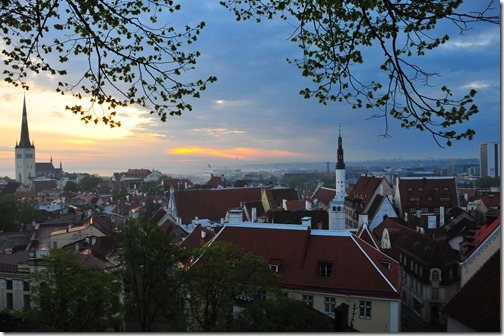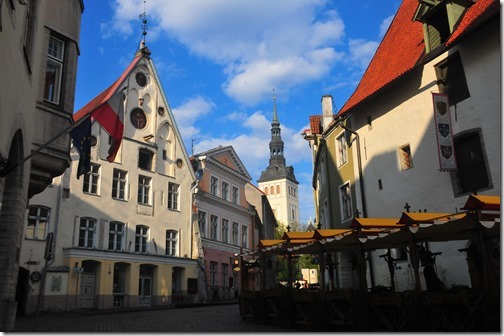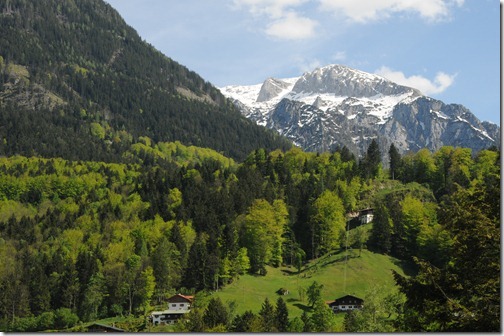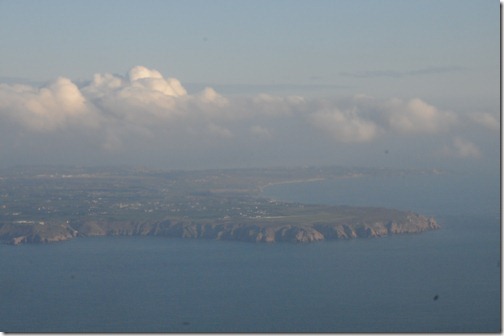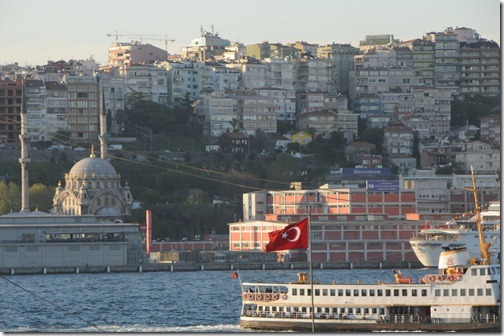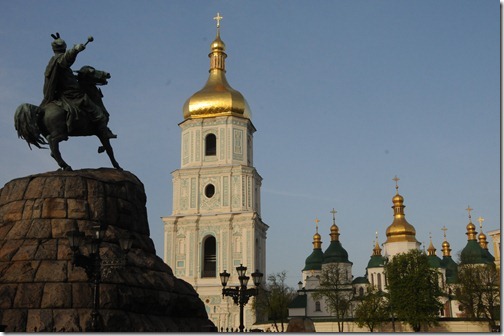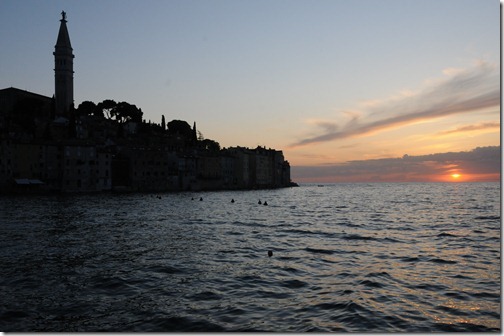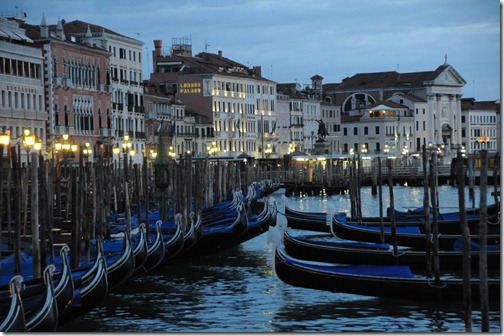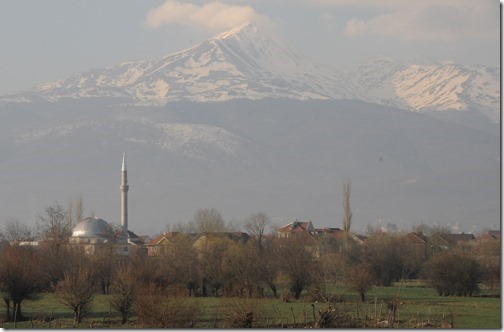4:30am and the sun started to rise over the Scandinavian-looking rooftops, igniting splashes of reds, oranges, and purples across the Baltic sky. The muted laughter of tipsy late night revelers echoed up through the narrow streets and off the impressive masonry of the city walls as I sat staring down at the city, taking it all in. It was my first morning in Tallinn, the capital of Estonia, and already I had decided that this is one of my all time favorite cities in one of my new favorite countries.
Category Archives: Europe & Mediterranean
Stories and tips involving travel within countries in Europe and the Mediterranean Sea
Berchtesgaden – Bavarian Paradise with an Unfortunate Past
My travels in May 2012 involved a trip to speak at a conference in a place that I could hardly pronounce, and was only vaguely aware even existed. A bastion of Bavarian Germany in the Alps called to me, drawing me into an area of untold beauty that has been spending the past 60 years trying to shake it’s association with the evils of Nazi Germany. I was headed to the city of Berchtesgaden in a small sliver of Germany called Berchtesgadener Land. This city is a destination that possesses all of the trappings of amazing natural beauty; soaring mountain peaks, delicious Bavarian cuisine, and some of the best beer in Germany. Despite all of this, however, I couldn’t help feeling the constant chill of the vestiges of Nazi past here, and couldn’t help comparing the pictures I took to those taken by Nazi soldiers here who shared the same plazas, mountains, and vistas.
Despite the tainted history that the Nazi past imparted on this place, I can sympathize with the residents here who had little control over what became of their mountain paradise. Great efforts have been undertaken to ensure that this place does not become a Nazi shrine, and tourism efforts here focus solely on the natural beauty and the pre-WWII history. So, in the end, I discovered a paradise in the Alps that I would recommend to anyone, despite the history.
Channel Islands of Jersey and Guernsey – Last Bastion of the Duchy of Normandy
Just off the Normandy Coast of France lies a series of small islands can be easily overlooked if you don’t look closely. For those that do find them on a map, many simply erroneously assume that the islands are part of France itself. In reality, these islands, known as the Channel Islands (or Îles d’la Manche locally) today, are the oldest possessions of the British monarchy, and have a long an interesting history involving Bretons, Normans, and even more recently Nazis.
At the same time, the islands themselves are gorgeous, the weather is much better than in most of the rest of the British Islands, the people are kind and relaxed, and the taxes are low. For these and for numerous other reasons, these Channel Islands are quite popular for businesses and residents, who come to enjoy these historic and picturesque islands.
My idea for a journey here started with a comment on this travel blog from Gus Fraser, a resident of Jersey, one of the Channel Islands. He noted that the Bailiwick of Jersey and the Bailiwick of Guernsey, both defined as ‘countries’ in the Traveler’s Century Club list of countries that I track were both conspicuously missing from my list. He also mentioned that there is a large IT community here, and that they held regular sessions and that I’d be more than welcome to speak at one. That was all the excuse I needed, and I took the opportunity provided by a trip to speak in Bavaria to take a side trip to these amazing islands, a diversion that proved to be highly entertaining for me.
Istanbul – Last Capital of the Roman Empire and Modern Turkish Delight
At the border between Europe and Asia lies a powerful and historic city that has been hotly contested over the years. Once the capital of the Eastern Roman Empire, this was a bastion of culture and power during the times while the Western Roman Empire was stumbling through the dark ages. Originally founded as Byzantium, the city today known as Istanbul was later renamed as Constantinople upon its selection of the new capital of the Roman Empire. This elevation to the capital of the most powerful empire of the time was just the beginning of the history of this proud and dynamic city at the crossroads of Europe and Asia.
In all of the travels I have done over the years, I was painfully aware of the fact that I kept sidestepping a visit to Istanbul. I tried to get there on multiple occasions, but the cruel hand of logistics always got in the way. Well, no more…during a lull between a speaking event in Kiev and one in Brussels, I found an opening, a 24 hour layover in Istanbul! This was my chance, and I grabbed it. And wow, what an experience it was…Istanbul was an even more enjoyable experience than I had expected. But first, to understand modern-day Istanbul you must first understand its historical past.
Kiev – Ancient Slavic Capital and Modern Gold-Domed Beauty
Kiev, the sprawling capital of Ukraine is without a doubt one of the most beautiful and dynamic cities in the world. It has history, architecture, great food, and a highly educated population, all traits of a world-class city. I have been fortunate to visit this great city four times, first in 1999, then more recently in the years 2010, 2011, and 2012.
Kiev has one of the oldest histories of any city in Eastern Europe, having previously served as the capital of Kievan Rus, the predecessor to the modern-day Eastern Slavic states of Russia, Ukraine, and Belarus. Legend holds that it was founded by the Varangian (Viking) siblings of Kyi, Shchek, Khoryv, and Lybid, with the eldest sibling Kyi being the inspiration for the city’s name.
For centuries Kiev was the capital and most important Slavic city, until the year 1240, when the Mongol invasion completely destroyed the city during the Siege of Kiev, an event that eventually resulted in the axis of Slavic power moving to Moscow, a city where it can be argued it still exists today. Despite this shift, however, Kiev remains a powerful cultural and industrial powerhouse in the region, much more so since Ukrainian independence in 1990.
Istria – Roman Ruins on a Sun-drenched Coast in Croatia
I’ll be completely honest with you…until recently I wasn’t even aware that there was a place in the world called Istria. Even en route to the place, I mistakenly referred to it as part of Dalmatia, only to be corrected by my Croatian friends that this portion of the Adriatic coast of their country has been known by it’s Roman name Istria (Histria) for over 2000 years.
And what a place it is…city after beautiful sparkling seaside city sprinkled along the coast south of Trieste, Italy, each one heavily influenced by their past conquerors, Illyrians, Romans, Venetians, Hapsburgs, Italians, and Slavs. This place is blessed with a sun-drenched coast, relatively low prices, and an easygoing multilingual population. Most people here speak English, not to mention Croatian, Italian, and German, making it a near-perfect vacation destination. And did I mention the unbelievable well-preserved Roman ruins? More on that later, however.
Venice – Visions of Ancient Grandeur and a Powerful Empire
It’s easy to dismiss the city of Venice as a giant tourist trap. After all, 50,000 tourists tramp through the city every day, stepping over the dwindling population of 60,000 local residents. The truth is, however, that the majority of the tourists stick to the popular sights such as St. Mark’s Square (Piazza San Marco) and the Rialto Bridge. One simply needs to wander down the alleyways and across the bridges of this amazing water-filled city to find the peace and quiet of quaint squares filled with elderly gentlemen sipping coffee and children playing football in the street.
The calmness of the city betrays the historical impact that this city had on the development of Europe and the world as a whole. This metropolis was the most powerful city in the world at one time, and some of the richest and most influential people of the time lived here. The vestiges of that storied past can be found everywhere, from the architecture to the monuments to the influence that the Venetian language has had on world vocabulary. Venice truly is a remarkable city, and regardless of the hordes of tourists, is well worth a visit.
Breathtaking Balkans – Journey through Albania, Kosovo, FYRO Macedonia and Bulgaria
The Balkan peninsula is an area of remarkable beauty that also happens to lie at the crossroads of multiple civilizations. This provides for the distinct advantage of enriching the area with trade and knowledge, but also carries the disadvantage of the fact that the area is constantly used as invasion route for numerous armies over the years. This fact may be one of the main reason why this area of the world does not see much in terms of organized tourism, as fresh memories of wars in the former Yugoslavia, pyramid scheme riots in Albania, and NATO bombings combined with longstanding misconceptions about the area work together to keep away most tourists.
After touring the area with my friends and fellow public speakers Joel Oleson and Paul Swider, I can most definitely say that this lack of interest in the area is a huge mistake…the region is filled with amazing sights, sounds, foods, and a friendly and resilient population. Like the Northern areas of the Balkans that we visited as part of an earlier trip I covered in a prior blog post, the South Balkans are amazing, inspiring, and highly recommended. But first, let me begin the story in the country in which it began…Albania.
Escape from the Ash Cloud: Journey Across Italy, San Marino, Vatican City, Spain, and Andorra
In every traveler’s life, there comes a time when things don’t go according to plan. Flight cancellations, lost luggage, and breakdowns in transportation inconvenience thousands of travelers every day. But on one week in April, 2010, the travel plans of millions of travelers in Europe were interrupted simultaneously by a massive volcanic eruption in Iceland, grounding thousands of flights and throwing the entire continent into panic mode. As it happened, this little travel ‘disruption’ caught me and my fellow travelers Joel Oleson and Paul Swider while we were in the Balkans (blog post on that trip here), stranding us on the continent and interrupting our plans to continue on to an event in London.
In the strange world of happenstance, I had actually driven right by this Icelandic volcano earlier in the year, a trip I covered in an earlier post on Iceland. It still seemed oddly coincidental that it decided to erupt a few short months later, but I promise that I didn’t deliberately pour any baking soda into the volcano when I was there to try to make my life more interesting.
In any case, after a fascinating and education trip through the Balkans, Joel, Paul and I had a decision to make. Sit out the ash cloud on the Dalmatian coast of Croatia or try to get home via other methods? Stirring the spirit of adventure in the three of us, we opted for the second option, making the determination that we would make every effort to get out of there as soon as we could. We were able to identify that flights were still leaving from Barcelona, Spain, and it looked likely that we would be able to get home from there, IF we were able to make it there in the first place.
Remnants of a Hapsburg Empire: Serbia, Romania, Bosnia-Herzegovina, Republika Srpska, Montenegro, and Croatia
Mention of the Hapsburg Empire conjures up images of Mozart, Viennese waltzes, and Austrian Dukes. But outside of the aristocratic musings in the capital, Vienna, a vast empire was stitched together over the years through various alliances, allegiances, and wars. While todays map of Europe may make this easy to forget, at one time the Hapsburg Empire controlled vast swaths of Europe, including a large portion of the Balkan peninsula, an area I visited in April, 2010.
On an invitation from a fellow colleague who lived in Croatia, Toni Frankola, a speaking team of Joel Oleson, Paul Swider, and I set off for Zagreb to speak at an event there, with the final destination of our trip being a large conference to be held in London a few days later. No Problem! We figured we’d tour the area, then fly from the city of Dubrovnik to London the day before the event was to begin.
As can probably be ascertained simply by reading this blog, I tend to be a fairly methodical logistical planner when it comes to my trips. All the logistical planning in the world can’t help you, however, if a massive Icelandic volcano spews ash all over Europe, shutting down nearly all flights across the continent over the period of a week. And as a result of this turn of events, our journey changed from a leisurely trip to London into a frenetic journey across Europe to escape the Ash Cloud. That, however, is another blog post, as I must first start the story in the Balkans, where it all began.

